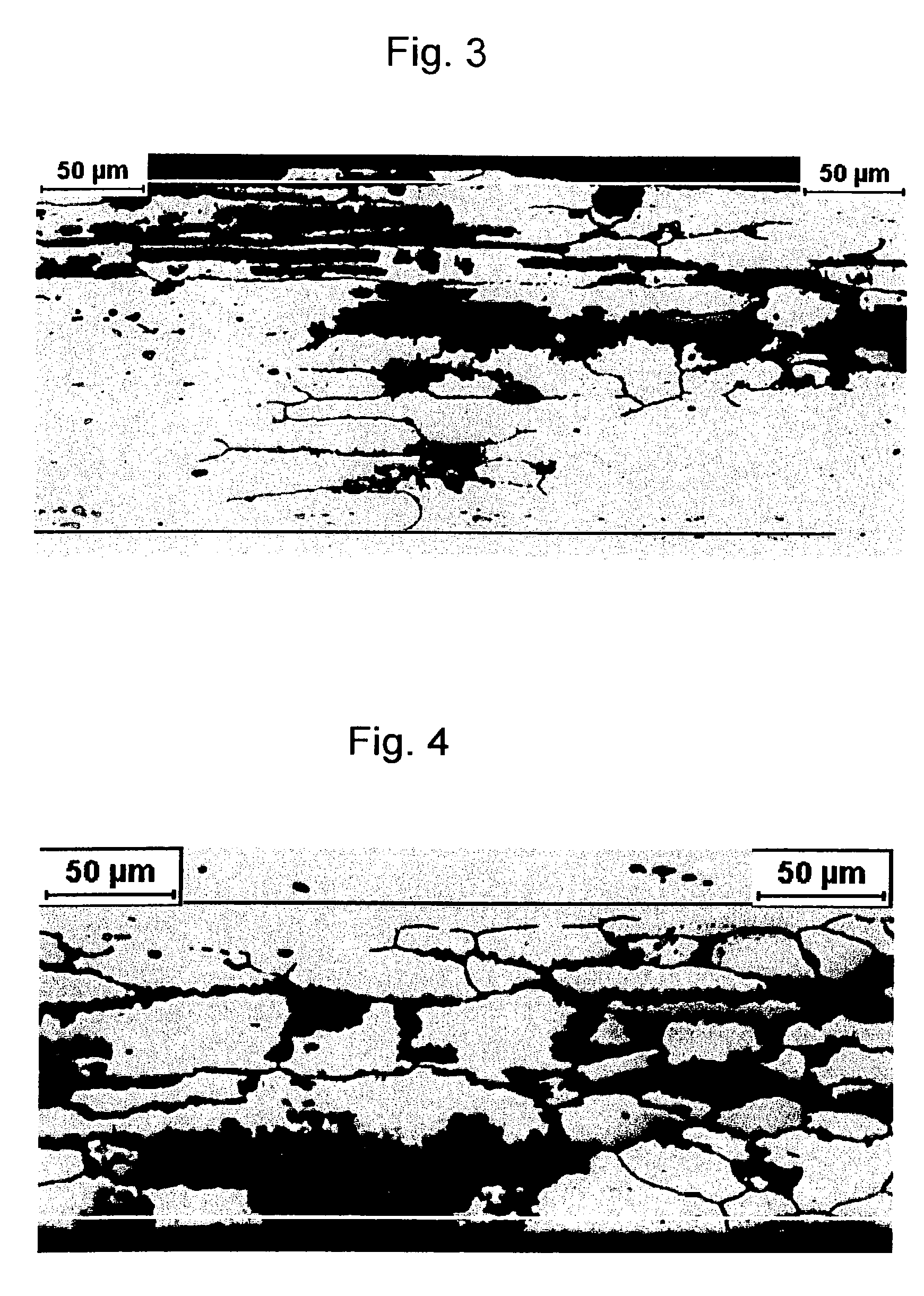Method of producing a high strength balanced Al-Mg-Si alloy and a weldable product of that alloy
- Summary
- Abstract
- Description
- Claims
- Application Information
AI Technical Summary
Benefits of technology
Problems solved by technology
Method used
Image
Examples
examples
[0090]On an industrial scale four different aluminum alloys have been cast into ingots having the following chemical composition as set out in Table 1.
[0091]
TABLE 1Chemical composition of the DC-cast aluminum alloys, in weightpercent, Zn = 0.01, Ti = 0.03, balance aluminum and inevitableimpurities.Alloying elementAlloySiFeCuMgMnCu / MnMg / Mn10.910.120.820.770.342.412.2620.790.110.860.930.342.532.7430.920.150.900.880.541.671.6340.790.170.860.950.441.952.16
[0092]Blocks of 10×10 cm have been sawn from the ingot slices, hot-rolled to a thickness of 9.0 mm and cold-rolled to a final gauge of 2.0 mm. The applied solution heat treatment was 550° C. for 15 min. with subsequent quenching and ageing to a T62 temper condition with 190° C. for 4 hours.
[0093]All alloys mentioned in Table 1 were subjected to various homogenization and pre-heat procedures. Examples for alloys 1 and 2 are identified within the following Tables 2 and 3:
[0094]
TABLE 2Overview of the applied homogenization and pre-heattre...
PUM
| Property | Measurement | Unit |
|---|---|---|
| Temperature | aaaaa | aaaaa |
| Temperature | aaaaa | aaaaa |
| Temperature | aaaaa | aaaaa |
Abstract
Description
Claims
Application Information
 Login to View More
Login to View More - R&D
- Intellectual Property
- Life Sciences
- Materials
- Tech Scout
- Unparalleled Data Quality
- Higher Quality Content
- 60% Fewer Hallucinations
Browse by: Latest US Patents, China's latest patents, Technical Efficacy Thesaurus, Application Domain, Technology Topic, Popular Technical Reports.
© 2025 PatSnap. All rights reserved.Legal|Privacy policy|Modern Slavery Act Transparency Statement|Sitemap|About US| Contact US: help@patsnap.com



